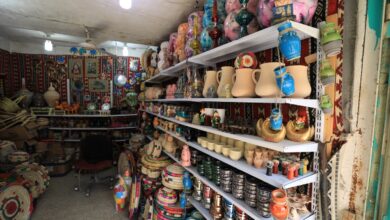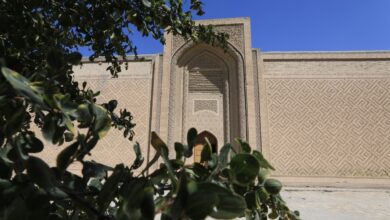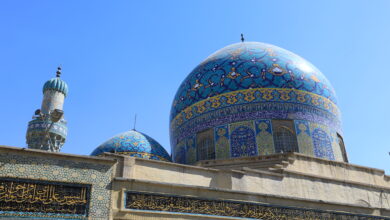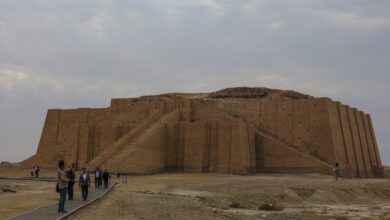Culture and Heritage
-

Sustaining Tradition: Pottery and Reed Crafts in Modern Homes
For thousands of years, clay utensils for cooking and storing food have been an integral part of households in Sumer, the earliest known civilisation in what is now southern Iraq. Pottery holds a profound significance in Iraqi culture, where ancient civilisations relied on clay for constructing homes, crafting cooking tools,…
Watch -

Abbasid Palace: Baghdad’s Majestic Legacy
The Abbasid Palace is recognised to be one of the most important heritage sites in Baghdad, located to the left bank of the Tigris River. It was built approximately between 1179 to 1225 AD by the Caliph Al-Nasser, which is towards the end of the Abbasid Dynasty. Entirely built with…
Watch -

Haydarkhana Mosque in Baghdad
The Haydarkhana mosque, constructed in 1826 under the supervision of Daoud, the Pasha of Baghdad, and subsequently refurbished in 1893 and 1920, is located within Baghdad’s al Rusafah neighbourhood, on al-Rasheed street. Despite its modest size, it is highly regarded for its exemplary Ottoman architectural style. The primary structure, crafted…
Watch -

The Great Ziggurat of Ur: A Structure of 4,000 Years Ago
Nasiriyah – (iina) Considered one of the most well-preserved ancient architectural innovations, the Ziggurat of Ur, consists of a pyramid-like structure with long stairs reaching the top of the tower. It is made out of bricks which date back to approximately 2100 B.C.E. The building is located close to Nasiriyah,…
Watch -

The Ancient Church of Al-Aqiser
Karbala (iina) – Karbala being the pilgrimage city of Muslims, also contains ancient heritage sites including one of the oldest churches in the Middle-East. Al-Aqiser church is situated in a desert area called Al-Qaseer. The ancient church dates back to the 50th century AD, meaning that Karbala is holds a…
Watch

